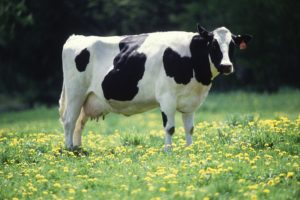 The American Academy of Pediatrics released a new report that the overuse of antibiotics in animals poses a real health risk to children. Giving routine antibiotics to animals leads to antibiotic resistant bacteria - which means that antibiotics may not work when given to people. Most of the antibiotics sold in the U.S. each year - 80 percent- are used in animals that people than eat. The great majority of antibiotics given to animals are the same ones given to humans.The main way to ensure that the meat that you are purchasing is antibiotic-free is to buy meat labeled organic. And to buy organic dairy products (milk, butter, cheese, cream). Note that the reason routine use of antibiotics in animals has not been stopped so far in the USA is due to agriculture industry lobbying. From Medical Xpress:
The American Academy of Pediatrics released a new report that the overuse of antibiotics in animals poses a real health risk to children. Giving routine antibiotics to animals leads to antibiotic resistant bacteria - which means that antibiotics may not work when given to people. Most of the antibiotics sold in the U.S. each year - 80 percent- are used in animals that people than eat. The great majority of antibiotics given to animals are the same ones given to humans.The main way to ensure that the meat that you are purchasing is antibiotic-free is to buy meat labeled organic. And to buy organic dairy products (milk, butter, cheese, cream). Note that the reason routine use of antibiotics in animals has not been stopped so far in the USA is due to agriculture industry lobbying. From Medical Xpress:
Pediatricians' group urges cuts in antibiotic use in livestock
Overuse of antibiotics in farm animals poses a real health risk to children, the American Academy of Pediatrics warns in a new report.This common practice is already contributing to bacterial resistance to medicines and affecting doctors' ability to treat life-threatening infections in kids, according to the paper published online Nov. 16 in the journal Pediatrics.
"The connection between production uses of antibiotics in the agricultural sector to antibiotic resistance is alarming," said Victoria Richards, an associate professor of medical sciences at the Quinnipiac University School of Medicine in Hamden, Conn. She believes the danger is "not only for infants and children but other vulnerable populations, such as the pregnant and the older individuals."
As the academy explained in its warning, antibiotics are often added to the feed of healthy livestock to boost growth, increase feed efficiency or prevent disease. However, the practice can also make antibiotics ineffective when they are needed to treat infections in people. Some examples of emerging antibiotic germs include methicillin-resistant staphylococcus aureus (MRSA), C.difficile, and highly resistant strains of the tuberculosis bacterium. Each year, more than 2 million Americans develop antibiotic-resistant infections and more than 23,000 die from these infections, the academy said. And in 2013, the highest incidence of such infections was among children younger than 5, federal government statistics show.
"Children can be exposed to multiple-drug resistant bacteria, which are extremely difficult to treat if they cause an infection, through contact with animals given antibiotics and through consuming the meat of those animals," report author Dr. Jerome Paulson, immediate past chair of the academy's executive committee of the Council on Environmental Health, said in an academy news release."Like humans, farm animals should receive appropriate antibiotics for bacterial infections," he said. "However, the indiscriminate use of antibiotics without a prescription or the input of a veterinarian puts the health of children at risk."
Spaeth noted that the U.S. Centers for Disease Control and Prevention, as well as the World Health Organization, have both called for a curbing of antibiotic use in animals. But the authors of the new report expressed concern over resistance from the agriculture and farming industry to such measures.
